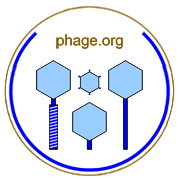

The infection of a bacterium by more than one phage.
Typically coinfection is seen, in the laboratory, as infection of single bacterium by two or more phages of the same phage type. However, it is possible for multiple phages to infect a single cell where those phages are not of the same type and in fact it is fairly typically for phages to infect bacteria that are already infected lysogenically. See also superinfection
Note that coinfection does not necessarily follow co- or multiple adsorptions of a single bacterium since phages can display superinfection exclusion, which means that later phages are blocked from entering the bacterium's cytoplasm (I use here the phage genome reaching the adsorbed bacterium's cytoplasm as a working definition of "infected"). Note also that under most circumstances the burst size of a coinfected bacterium is either the same as that of a singly infected bacterium or declines relative to a singly infected bacterium. The latter can be described as a depressor effect.
For more on this topic, see Wikipedia, Google, and PubMed. Contact web master. Return to terms.











